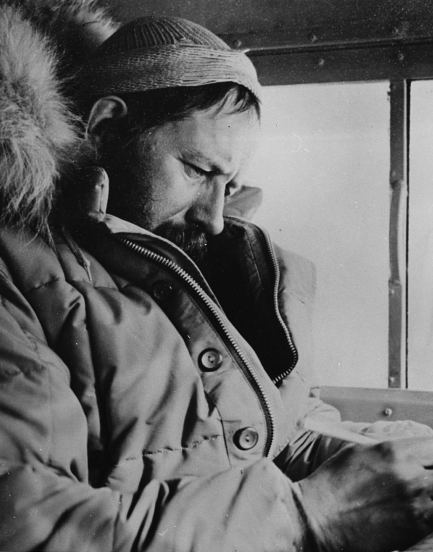Nationality American Name Albert Crary Awards Patron's Gold Medal Children Frank J. Crary III Resting place Pierrepont | Spouse Mildred R. Rodgers Role Geophysicist Fields Geophysics, Glaciology | |
 | ||
Born Albert Paddock CraryJuly 25, 1911Pierrepont, New York, United States ( 1911-07-25 ) Alma mater St. Lawrence UniversityLehigh University Died 1987, Washington, D.C., United States Notable awards Cullum Geographical Medal (1959) | ||
CRARY LAB TOUR
Albert Paddock Crary (July 25, 1911 – October 29, 1987), was a pioneer polar geophysicist and glaciologist. He was the first person to have stepped foot on both the North and South Poles, having made it to the North Pole on May 3, 1952 (with Joseph O. Fletcher and William P. Benedict) and then to the South Pole on February 12, 1961 as the leader of a team of eight. The South Pole expedition set out from McMurdo Station on December 10, 1960, using three Snowcats with trailers. Crary was the seventh expedition leader to arrive at the South Pole by surface transportation (the six others before him were—in sequence—Amundsen, Scott, Hillary, Fuchs, a Russian expedition in 1959/60 from Vostok base, and Antero Havola). He was widely admired for his intellect, wit, skills and as a great administrator for polar research expeditions.
Contents
Biography
Crary was born in 1911 into a farming family in northern New York State. He was the second oldest in a family of 7 children. He was a physics major and geology student at St. Lawrence University in Canton, New York. He graduated in 1931 Phi Beta Kappa from St. Lawrence University and then enrolled at Lehigh University to obtain a master's degree in physics. After spending years completing and facilitating research at both poles, Crary eventually settled in Bethesda, Maryland with his wife and son.
His awards included the Cullum Geographical Medal (1959), the Patron's Gold Medal (1963), and the Vega Medal (1972).
He died on October 29, 1987 at the George Washington University Hospital in Washington, D.C.
Legacy
In 1991, the National Science Foundation (NSF), which manages the U.S. Antarctic Program (USAP), honoured his memory by dedicating a state-of-the-art laboratory complex in his name, the Albert P. Crary Science and Engineering Center (CSEC) located in McMurdo Station. He was also honored by having the Crary Mountains (76 degrees 48' S, 117 degrees 40' W) and the Crary Ice Rise in Antarctica named for him as well.
Contributions
Dr. Crary contributed in a variety of important ways to his field including:
He worked with many notable scientists and famous institutions:
